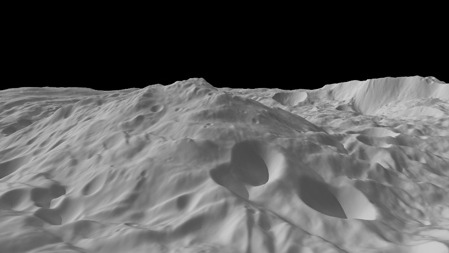
This giant prow as seen by a digitally reworked image provided by Dawn rises three times higher above the surrounding crater basin than Mt Everest is above sea level on earth. Click to embiggen
NASA’s Dawn spacecraft continues to spiral ever closer to the surface of Vesta, the second largest asteroid in the main belt. The ion powered probe has found fresh craters, strange troughs, and a mountain that dwarfs the mighty Himalayas:
Scientists do not yet understand how all the features on Vesta’s surface formed, but they did announce today, after analysis of northern and southern troughs, that results are consistent with models of fracture formation due to giant impact.

Leave a Reply
You must be logged in to post a comment.